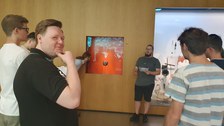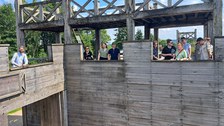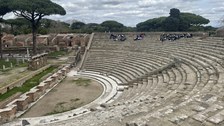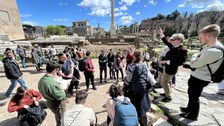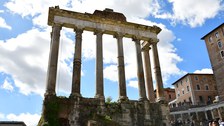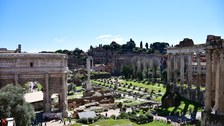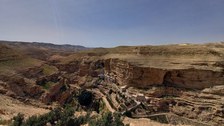Field trips
Here you will find short impressions of various field trips in which members of the Chairs have taken part.
To conclude the lecture period in the summer semester 2024, an excursion on the topic of "Romans and Germanic tribes" took place from 18 to 19 July for students in Ancient History and Antike Kulturen. With the Varus Battle Museum in Kalkriese, the LWL Roman Museum in Haltern am See and the Xanten Archaeological Park, archaeological sites and museums were visited where interactions between Romans and Germanic tribes become tangible. At the Museum of the Battle of Teutoburg Forest, we discussed whether the archaeological finds there and the literary sources allow the battlefield to be clearly localized. In Haltern, we visited the partial reconstruction of a Roman military camp - possibly Aliso. The final stop was the Colonia Ulpia Traiana in Xanten, whose remains and reconstructions provided an insight into civilian life in a Roman colony.

© Noreen Stühmer
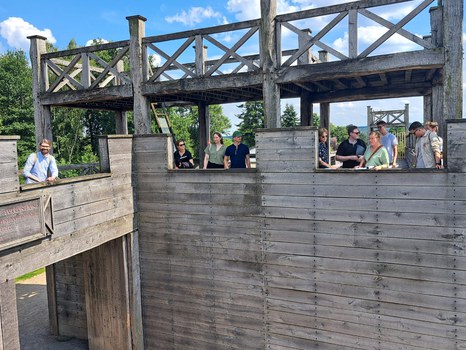
© Leon Hartmann
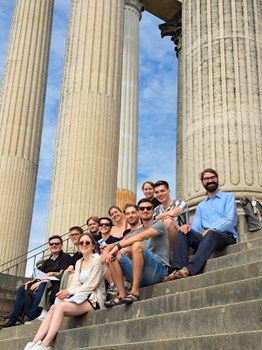
© Leon Hartmann
After intensive preparation last winter semester, a total of 18 students from the field of Antike Kulturen went on an field trip to Rome from 25 March to 30 March. Supported by the TUD's Ancient History and Classical Philology departments and the Italian colleagues Silvia Orlandi and Fabio Guidetti, the program included the Forums, Colosseum and Pantheon as well as the newly opened Domus Aurea of Emperor Nero and the magnificent Museum Centrale Montemartini. In terms of time and theme, the tour covered the period from the Tomb of the Scipios on the Via Appia to the ara pacis of Augustus and the frescoes and mosaics of the numerous churches, from Republican Rome to Christian late antiquity - and the eternal city was explored intensively. Filled with numerous impressions and discussions on site for further research and teaching, the summer semester can now begin!

© Anna-Lisa Fichte

© Anna-Lisa Fichte
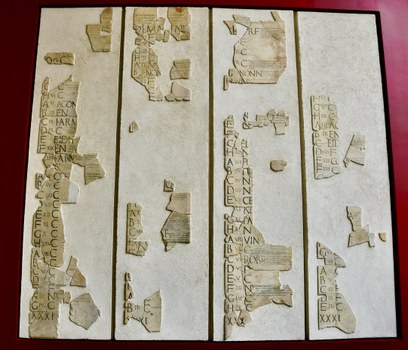
© Anna-Lisa Fichte
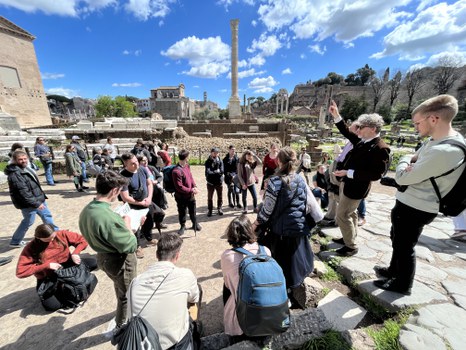
© Vera Gotter
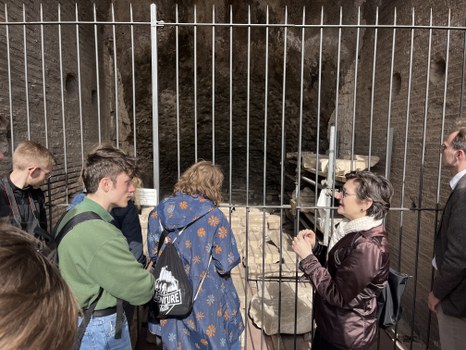
© Vera Gotter
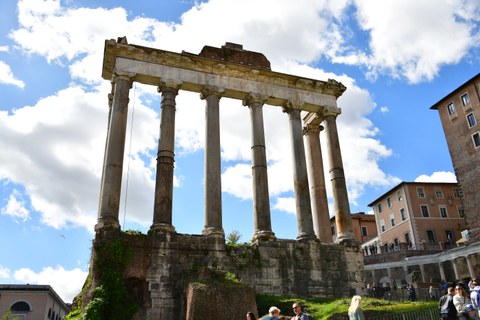
© Anna-Lisa Fichte

© Anna-Lisa Fichte
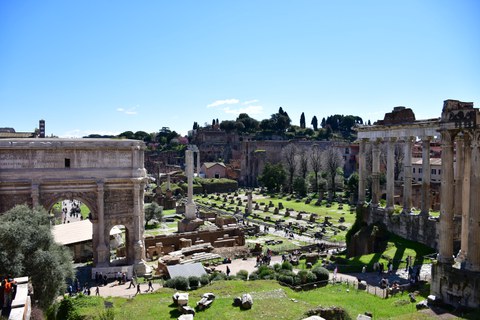
© Anna-Lisa Fichte
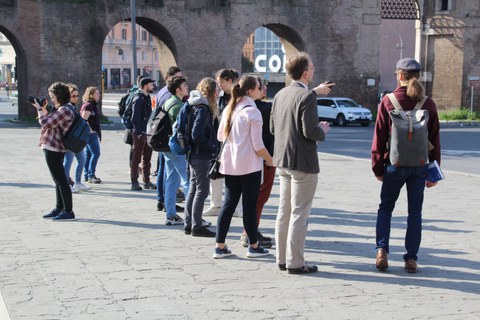
© H. Pirl
On the 7-day trip through southern France in October 2019, students from the Institute of Classical Philology explored the territory of the former Imperium Romanum. The province, the so-called Gallia Narbonensis, had been annexed to the empire since 125 BC.
In preparation for the field trip, we took part in a block seminar to gain an overview of the region in different eras - from the late Republican period to individual personalities in law, politics and religion to late antiquity and the strong influence of Christianity. From a philological perspective, we also looked at the language region and language history.
Our journey began in Lyon (Lugdunum), from where we traveled to Vienne, Orange (Arausio) and Nîmes (Nemausus), among other places. The participants each took on the role of a "place, person or exhibit expert", turning a city tour into a philological and historical journey of knowledge. On the way to Nîmes (Nemausus), we visited the Pont-du-Gard, an imposing monument to Roman water supply technology, which crosses the River Gardon (Vardo fluvius). Further stops were the papal palace in Avignon (Avenio), where a total of seven popes resided in the 14th century, Arles (Arelate) with its amphitheater that could seat 25,000 people and finally Marseille (Massilia), which had already grown into a large and rich polis with its port.
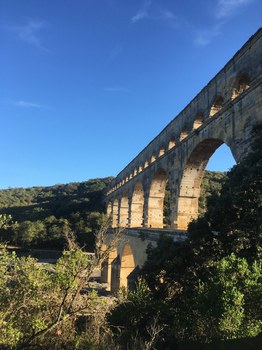
© Vera Gotter
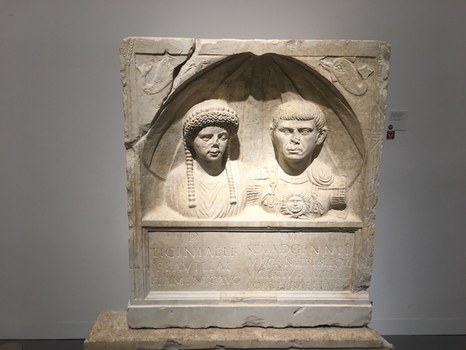
© Vera Gotter

© Vera Gotter
From March 13-22, 2022, we traveled to Israel under the direction of the Chair of Biblical Theology to experience the rich and varied history of the country on a 10-day study trip. We started the first few days by bus from the Kibbutz Degania Bet, which, in the evenings, offered us students new insights into collectively organized communities. On the excursion with a biblical focus in northern Israel, we visited many memorial sites of early Christianity, such as the Mount of Beatitudes, Tabgha, Migdal, Capharnaum and Megiddo, as well as archaeologically significant sites such as Tel Dan, Jericho and Scythopolis with very well-preserved imperial city complexes and associated thermal baths from the 2nd century AD. In Jerusalem, our starting point was the German Hospice, from where we visited the city (the Church of the Holy Sepulchre, the Hezekiah Tunnel and the City of David, which is considered to be the oldest inhabited part of Jerusalem, the Temple Mount and the Roman Cardo) in all its ancient historical facets. In the surrounding area, we visited the Herodium, a fortress and palace complex built by King Herod (24-12 BC) and the Church of the Nativity in Bethlehem as an example of an early Christian church building.
Inspired by our presentations at the respective locations, we discussed how archaeological finds, biblical and Jewish traditions relate to each other and can be connected. Excursions and hikes to the green north, the blooming Judean desert in Wadi Qelt and the Dead Sea also gave us the opportunity to get to know Israel and its history from a broader geographical and scenic perspective.

© Julia Müller

© Julia Müller

© Julia Müller

